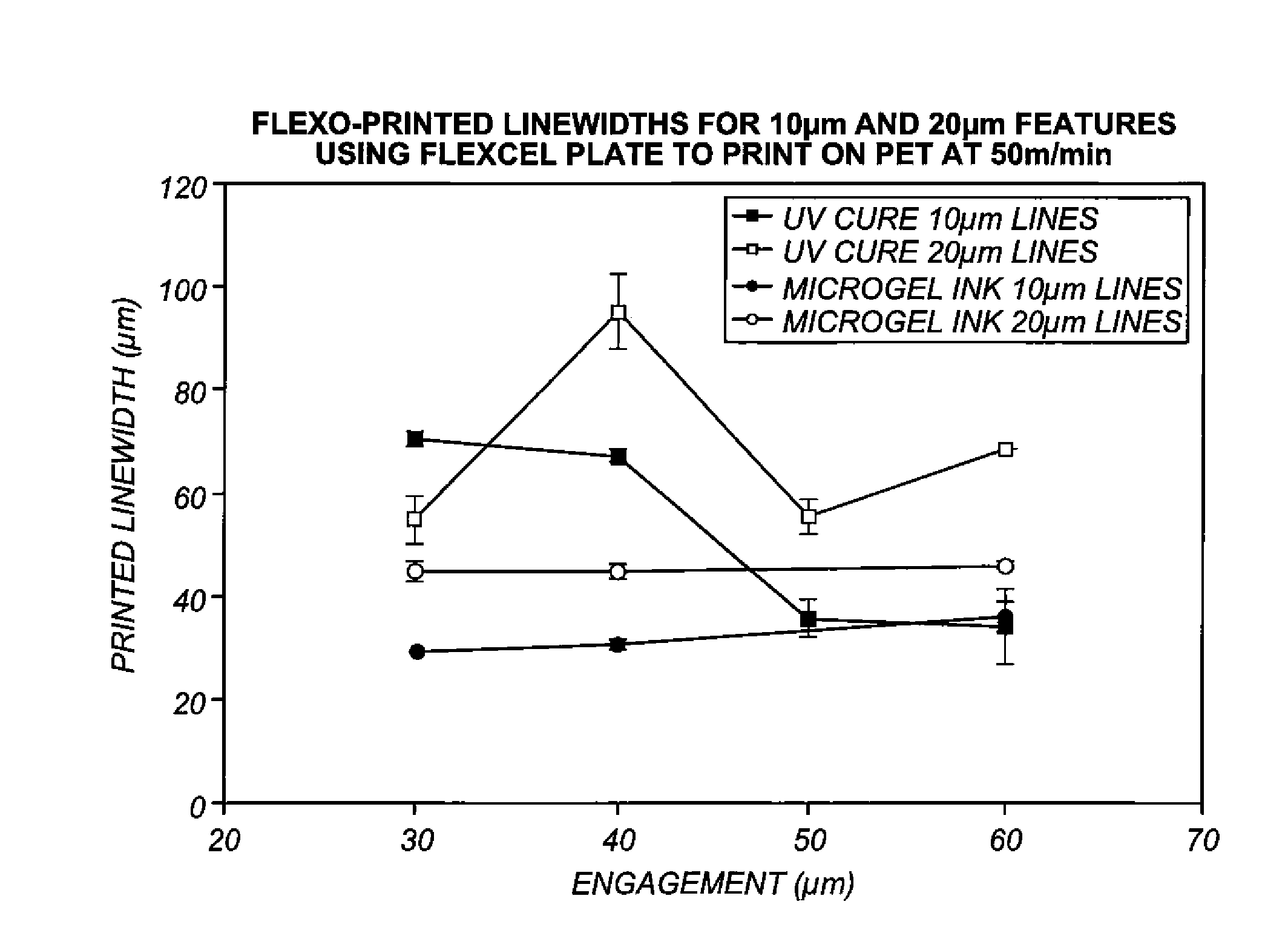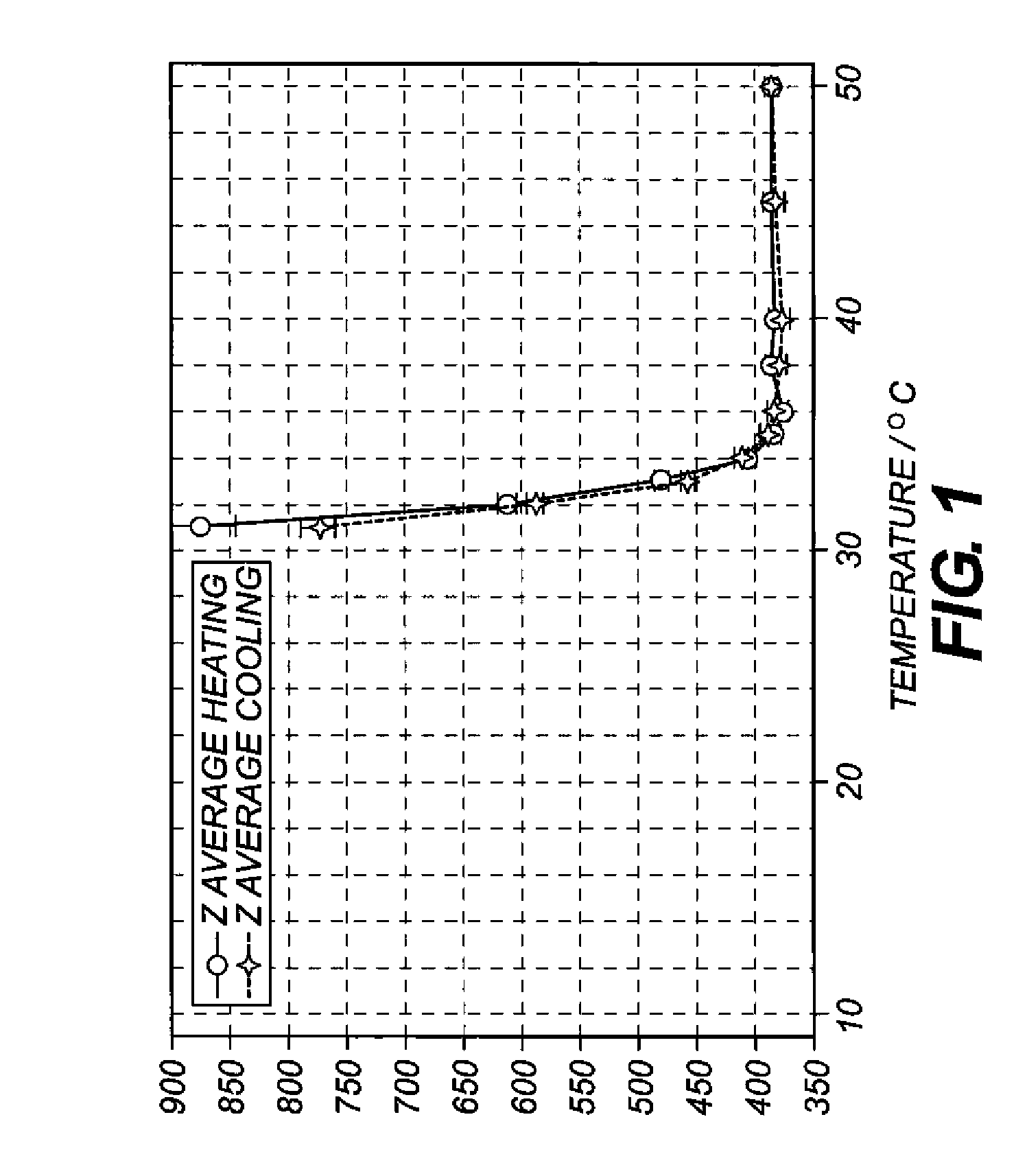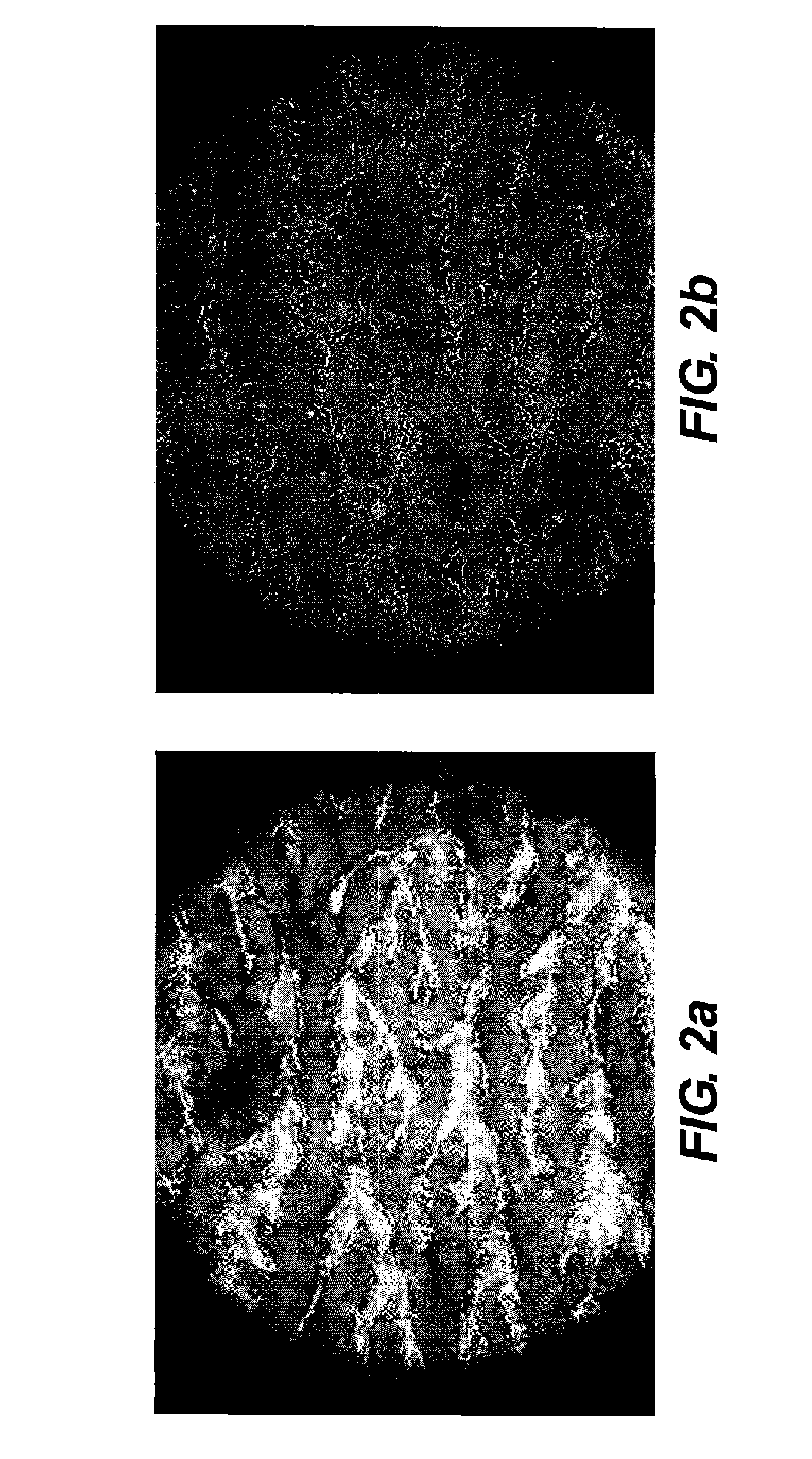Flexographic printing inks
a technology of flexographic printing and inks, applied in the field of flexographic printing, can solve the problems of limited viscosity, low energy substrates that require corona discharge treatment, and regulations restrict the amount of volatile organics that can be used, so as to improve the printing performance of fluids, improve adhesion, and improve resolution
- Summary
- Abstract
- Description
- Claims
- Application Information
AI Technical Summary
Benefits of technology
Problems solved by technology
Method used
Image
Examples
example 1
[0082]A microgel based ink formulated using 4% microgel was prepared using 7.9 g of N-isopropylacrylamide (NIPAM), 0.151 g of methylenebisacrylamide (BIS), 0.256 g potassium persulfate (KPS) and 460 g of water. In a 1 litre double-wall glass reactor with mechanical stirring, refrigerant and N2 inlet, the NIPAM was added to half the BIS at a reactor temperature of 40° C. With the solution stirred at 200 rpm and purged with N2 for 1 hour, once purged, the temperature was increased to 70° C. The KPS was dissolved in 10 ml deionised (DI) water at room temperature. The other half of the BIS (0.0755 g) was also dissolved in 10 ml DI water. The KPS initiator solution was poured into the reactor in one shot. The BIS solution was added into the reactor dropwise over the next 30 minutes. The dispersion was mixed for 6 hours then left to cool overnight at room temperature. The dispersion was filtered on filter paper to remove any residues from the stirrer bar using a Buchner filter with pump a...
example 2
[0085]A printing ink was formulated using 4% microgel from Example 1, 6% carbon black pigment (IDIS 40. Evonik), 0.19% Surfynol™ 104 (Air Products) and 1.2% sodium dodecyl sulfate (SDS, Fluka). The ink was mixed by rolling on ball mill for several hours. The ink was flexographically printed onto PET substrate using an EASIproof™ flexographic printer (RK Print Ltd. Royston) to print large areas of solid ink.
[0086]A comparison of the uniformity of the printed regions with the low SDS concentration of Example 1 and the high concentration of SDS of Example 2 is shown in the optical micrographs of FIG. 2. The darker areas of the image are inked areas. FIG. 2a shows a micrograph of approximately 2 mm square area of the printed ink sample from Example 1 with 0.12% SDS, whilst FIG. 2b shows the same sized area of the printed ink sample from Example 2 with 1.2% wt SDS. It is clear from the images that the sample with higher SDS concentration gives more uniform ink coverage.
example 3
Improved Resolution and Reduced Sensitivity to Printing Parameters
[0087]An ink was formulated as in Example 2. The ink was flexographically printed onto a sample of PET using an RK Flexiproof™ 100 (RK Print Ltd., Royston). A Kodak Flexcel™ plate was mounted on the Flexiproof™ using two layers of rigid double sided plate mounting tape to ensure the correct plate thickness. The anilox was a ceramic, laser engraved 800 lpi. All experiments were performed at ambient temperature which was approximately 18-20° C. Substrate speed was 50 m / min. The point of kiss contact and optimum pressures were determined using Flexocure Gemini™ (Flint inks) UV-curable ink since it does not dry. The effects of different levels of engagement pressure on the printed line width were investigated (where kiss contact is at 0 μm engagement). FIG. 3 shows a comparison of the printed line width for both 10 μm and 20 μm wide lines on the plate, using both the UV-curable ink and the microgel-containing ink. It is c...
PUM
| Property | Measurement | Unit |
|---|---|---|
| Temperature | aaaaa | aaaaa |
| Percent by mass | aaaaa | aaaaa |
| Pressure | aaaaa | aaaaa |
Abstract
Description
Claims
Application Information
 Login to View More
Login to View More - R&D
- Intellectual Property
- Life Sciences
- Materials
- Tech Scout
- Unparalleled Data Quality
- Higher Quality Content
- 60% Fewer Hallucinations
Browse by: Latest US Patents, China's latest patents, Technical Efficacy Thesaurus, Application Domain, Technology Topic, Popular Technical Reports.
© 2025 PatSnap. All rights reserved.Legal|Privacy policy|Modern Slavery Act Transparency Statement|Sitemap|About US| Contact US: help@patsnap.com



